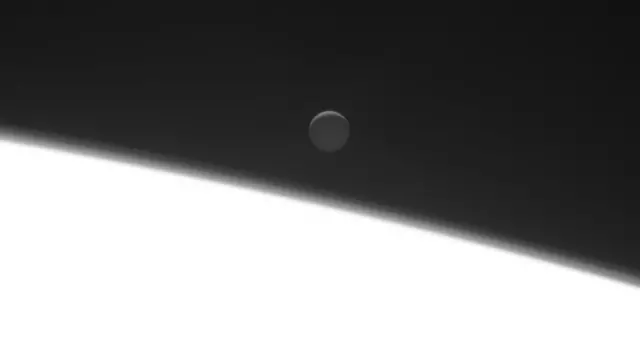Playing with picturespublished at 05:36 BST 15 September 2017
There is a large community of enthusiasts out there who like to process the raw images that come back from Cassini. And they do a very impressive job. Jason Major has established quite a name for himself in this activity.
Allow X content?
This article contains content provided by X. We ask for your permission before anything is loaded, as they may be using cookies and other technologies. You may want to read X’s cookie policy, external and privacy policy, external before accepting. To view this content choose ‘accept and continue’.

